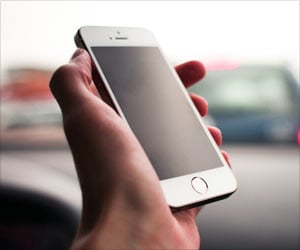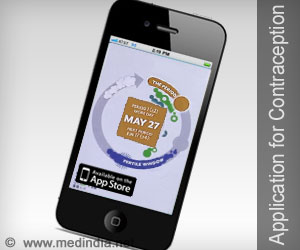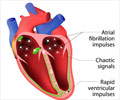Current methods for detection of atrial fibrillation are infeasible for wide-scale screening of populations or higher risk age groups.

‘Using smartphone app is a low cost, non-invasive way to detect atrial fibrillation that people can do themselves without any help from medical staff.’





"Atrial fibrillation is a dangerous medical condition present in 2% of the global population and accounting for up to seven million strokes per year," said lead author Tero Koivisto, a vice-director of the Technology Research Centre (TRC), University of Turku, Finland. "In the European Union alone this heart rhythm disorder costs approximately USD $19 billion every year." Around 70% of strokes due to atrial fibrillation could be avoided with pre-emptive medication. However, atrial fibrillation often occurs randomly on/off and is difficult to detect by visiting a doctor. There are relatively large and costly electrocardiogram (ECG) devices that patients can take home for long-term monitoring but they require a patch or wires that are clumsy to use and continuous contact with electrodes tends to irritate the skin.
Due to the above constraints, current methods for detection of atrial fibrillation are infeasible for wide-scale screening of populations or higher risk age groups (60 years and above).
The current study tested the ability of a smartphone to detect atrial fibrillation without any add-on hardware. The study included 16 patients with atrial fibrillation from the Turku Heart Centre. In addition, 20 recordings from healthy people were used as control group data to validate the developed algorithm.
To detect atrial fibrillation, a smartphone was placed on the chest of the patient, and accelerometer and gyroscope recordings were taken. Patients were advised to lie in a prone or supine position during the measurements.
Advertisement
Using this technology the investigators detected atrial fibrillation with a sensitivity and specificity of more than 95%. "We measure the actual motion of the heart via miniature accelerometers and gyroscopes that are already installed in today's smartphones," said Mr Koivisto. "No additional hardware is needed and people just need to install an app with the algorithm we developed."
Advertisement
Mr Koivisto concluded: "This is a low cost, non-invasive way to detect atrial fibrillation that people can do themselves without any help from medical staff. Given the widespread use of smartphones, it has the potential to be used by large populations worldwide. In future, a secure cloud service could be created to store and analyse larger masses of data."
Source-Medindia













